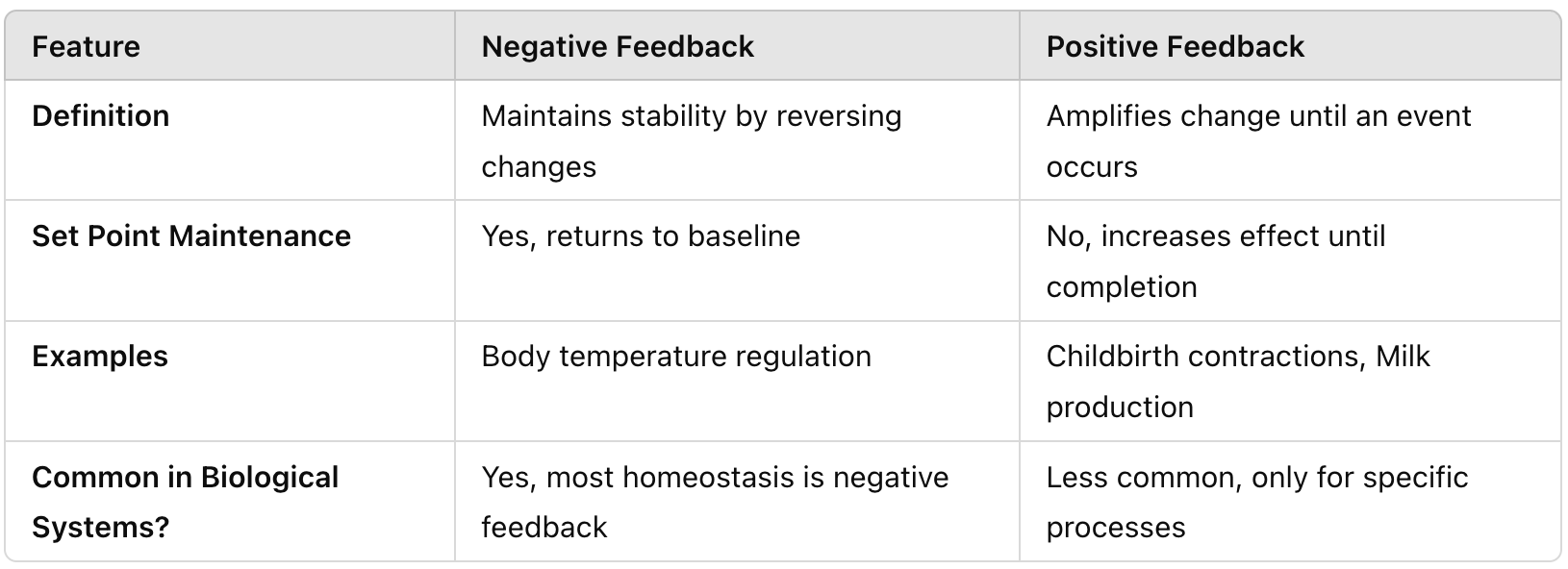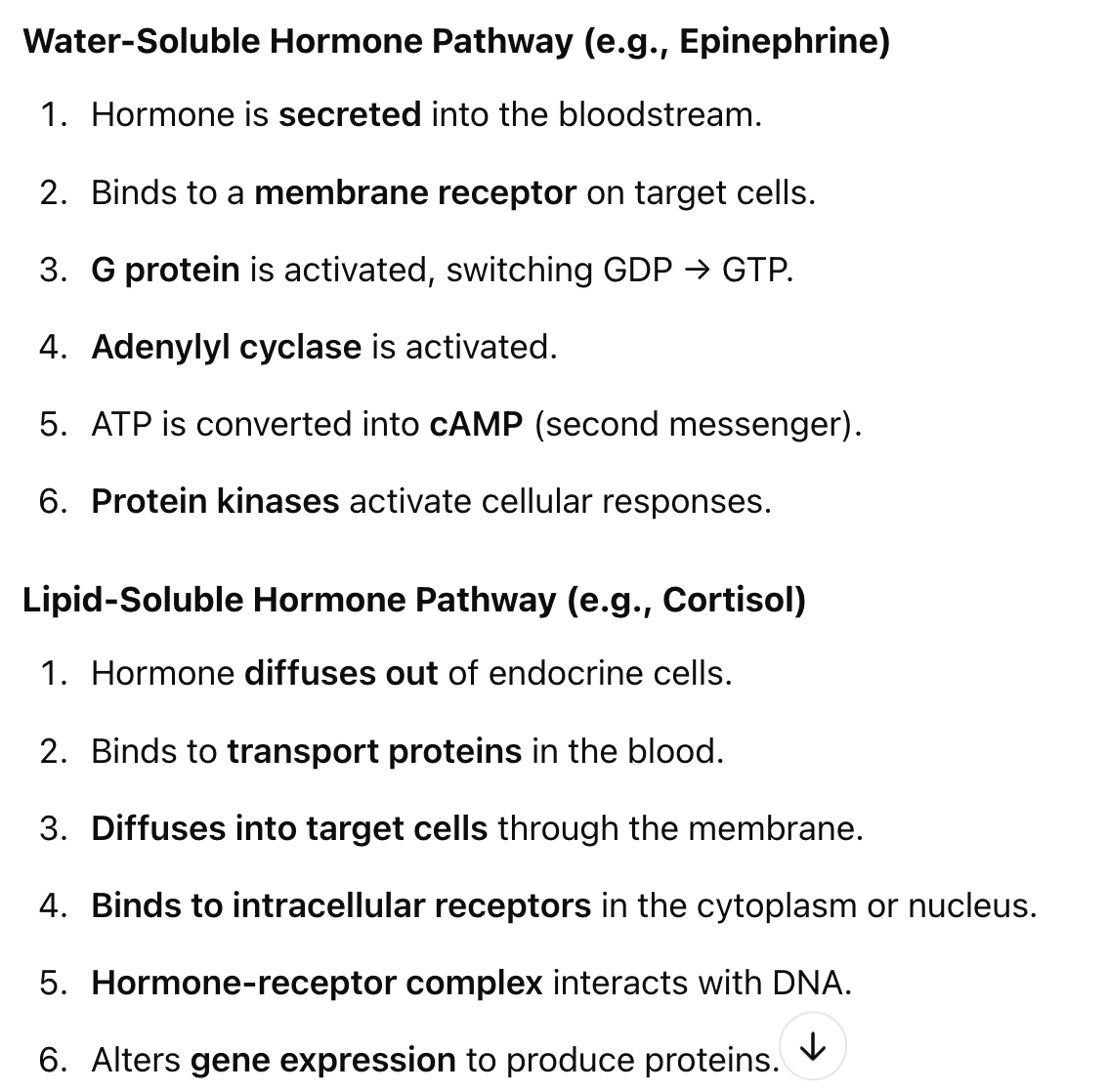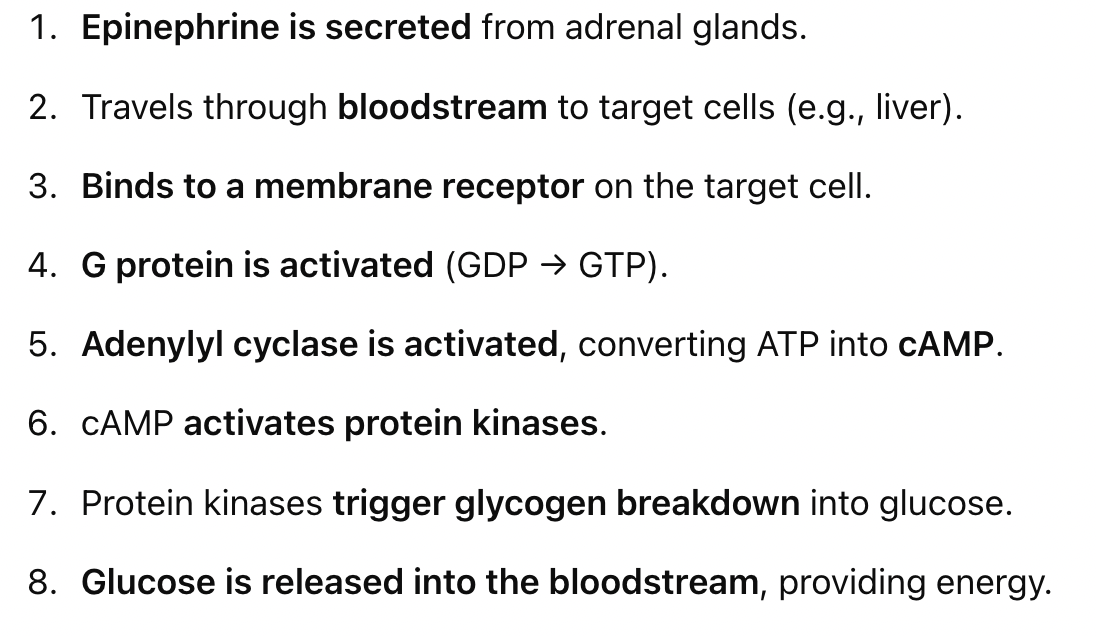Topic 10- Endocrine System I
1/33
There's no tags or description
Looks like no tags are added yet.
Name | Mastery | Learn | Test | Matching | Spaced |
|---|
No study sessions yet.
34 Terms
What is homeostasis?
The ability to maintain a stable internal environment despite external changes.
What mechanism does homeostasis use for regulation?
Feedback mechanisms.
What is negative feedback?
A process that maintains stability by keeping conditions at a set point (e.g., body temperature regulation).
What is positive feedback?
A process that amplifies a change until a specific event occurs (e.g., labor → childbirth, suckling → milk production).
What are the three main substances exchanged between the body and the environment?
Gases, nutrients, and waste.
How does the body increase efficiency in exchanging gases and nutrients?
By using branching and folding structures to increase surface area.
What is a hormone?
A chemical messenger that regulates body processes.
How do hormones travel in the body?
Through bodily fluids like blood.
What is a target cell?
A cell with specific receptors for a hormone.
What happens when a cell receives too much of a hormone signal?
Downregulation – it reduces the number of receptors.
What happens when a cell receives too little of a hormone signal?
Upregulation – it increases the number of receptors.
What are the five types of intercellular communication?
"Every Penguin Always Needs Snacks."
Every → Endocrine (hormones travel through blood to distant targets)
Penguin → Paracrine (hormones act on nearby cells)
Always → Autocrine (cell responds to its own signals)
Needs → Neuroendocrine (neurons release neurohormones into blood)
Snacks → Synaptic (neurons use neurotransmitters across synapses)
What are the three major classes of hormones?
Polypeptides (e.g., insulin, polar, cannot pass through membranes). 2. Steroids (e.g., cortisol, non-polar, derived from cholesterol). 3. Amines (e.g., epinephrine, derived from amino acids, small & fast).
What is the difference between water-soluble and lipid-soluble hormones?
Water-soluble (polypeptides & most amines) bind to external membrane receptors; Lipid-soluble (steroids) diffuse into cells and bind to internal receptors.
Do water-soluble hormones enter the cell?
No, they bind to membrane receptors and use intracellular signaling pathways.
What happens when a hormone binds to a membrane receptor?
It activates a G protein, which changes shape and switches GDP → GTP.
What does the G protein activate?
Adenylyl cyclase, which converts ATP into cAMP (a second messenger).
What is the role of cAMP in hormone signaling?
It activates protein kinases, which modify proteins by adding phosphate groups.
How do protein kinases affect cellular function?
They activate or inhibit proteins by phosphorylation.
How do lipid-soluble hormones travel in the blood?
They bind to transport proteins to prevent clumping in watery blood.
What happens after lipid-soluble hormones enter a target cell?
They bind to receptors in the cytoplasm, the hormone-receptor complex enters the nucleus, and they alter gene expression by modifying protein production.
Why can the same hormone have different effects on different cells?
Because different cells have different receptors or respond differently to the hormone.
What is the main difference between endocrine and exocrine glands?
Endocrine glands release hormones into the bloodstream (ductless); Exocrine glands release secretions through ducts to specific locations.
What are examples of endocrine glands?
Pituitary gland, adrenal gland, thyroid gland.
What are examples of exocrine glands?
Sweat glands, mammary glands, salivary glands, digestive glands.
"Some Mothers Serve Dinner."
Some → Sweat glands
Mothers → Mammary glands
Serve → Salivary glands
Dinner → Digestive glands
How do exocrine glands deliver secretions?
Through ducts to specific locations (e.g., skin, digestive tract).
Compare and contrast homeostatic processes (definition, set point maintenance, examples, common in biological processes)

sequence homeostatic processes
"Silly Rabbits Can Eat Red Radishes."
Silly → Stimulus (initiates the process)
Rabbits → Receptor (detects the stimulus)
Can → Control Center (processes the signal and decides action)
Eat → Effector (carries out the response)
Red → Response (body's reaction to stimulus)
Radishes → Restoration (returns body to balance/homeostasis)
Compare and contrast types of intercellular communication EPANS (distance, mode of transmission, example)

Compare and contrast types of signaling molecules which are the three classes of hormones (structure, solubility, example, receptor location)

Sequence water- and lipid-soluble hormone pathways

Compare and contrast water- and lipid-soluble hormone pathways (receptor location, transport in blood, mechanism of action, time to effect, example)

Sequence action of epinephrine

Compare and contrast endocrine and exocrine systems (definition, gland type, mode of action, and example)
